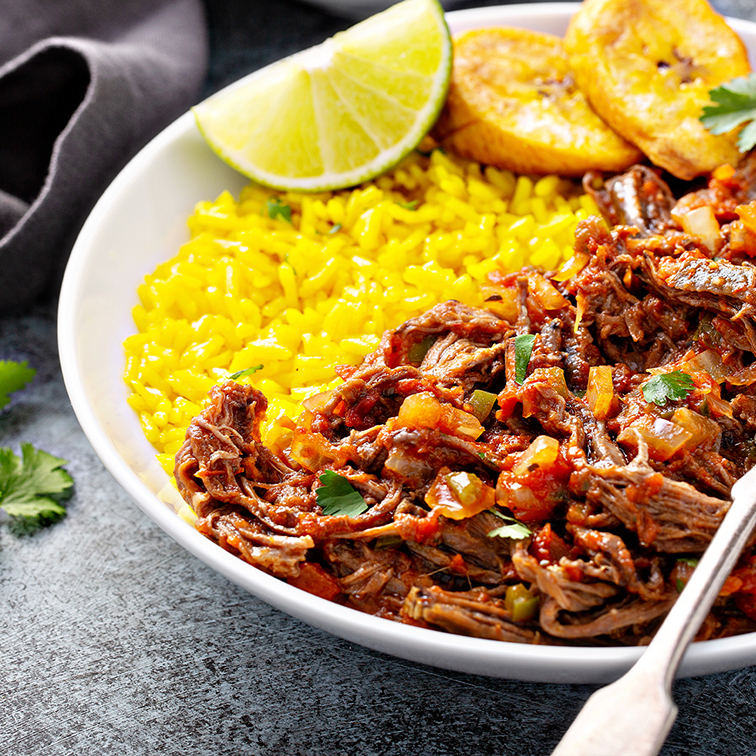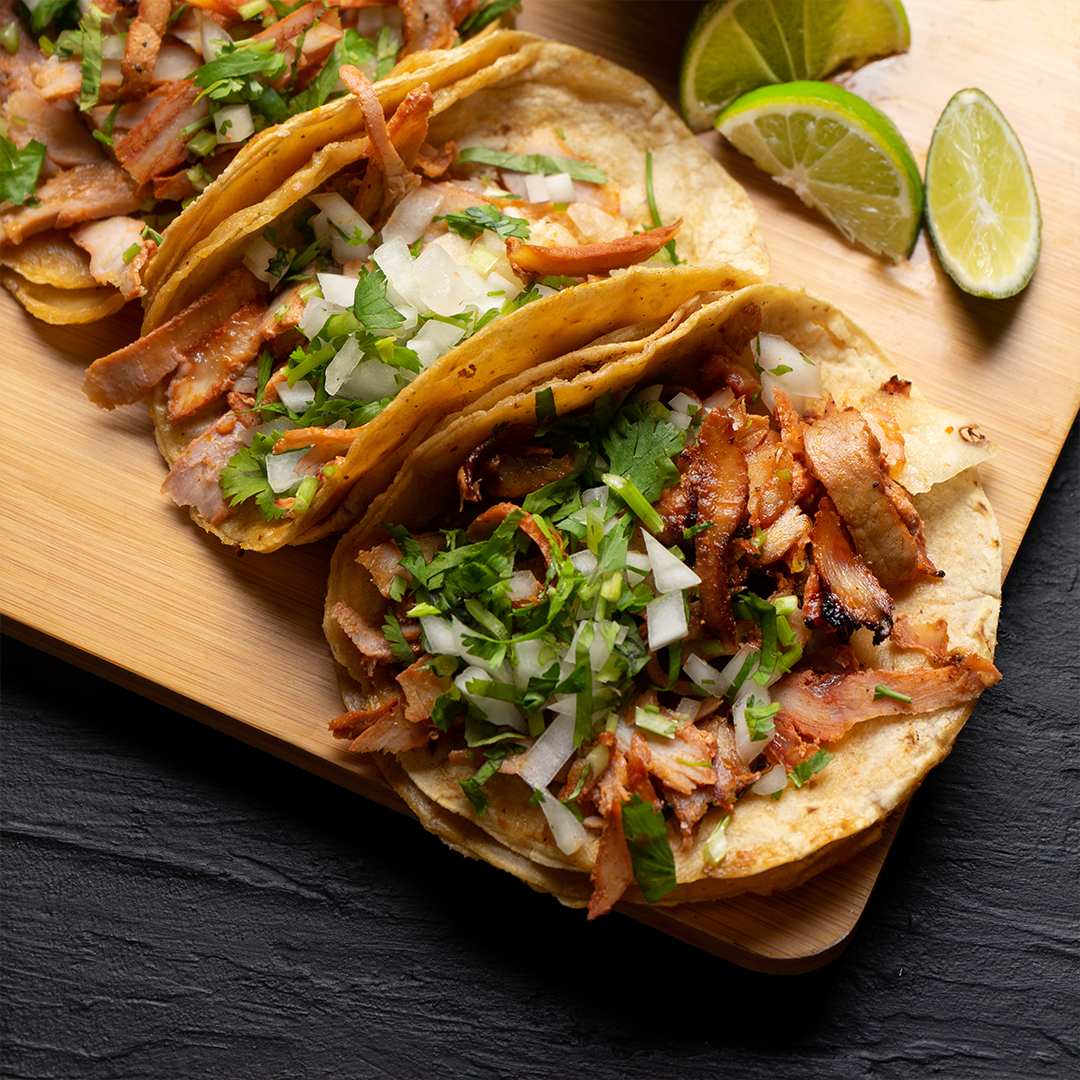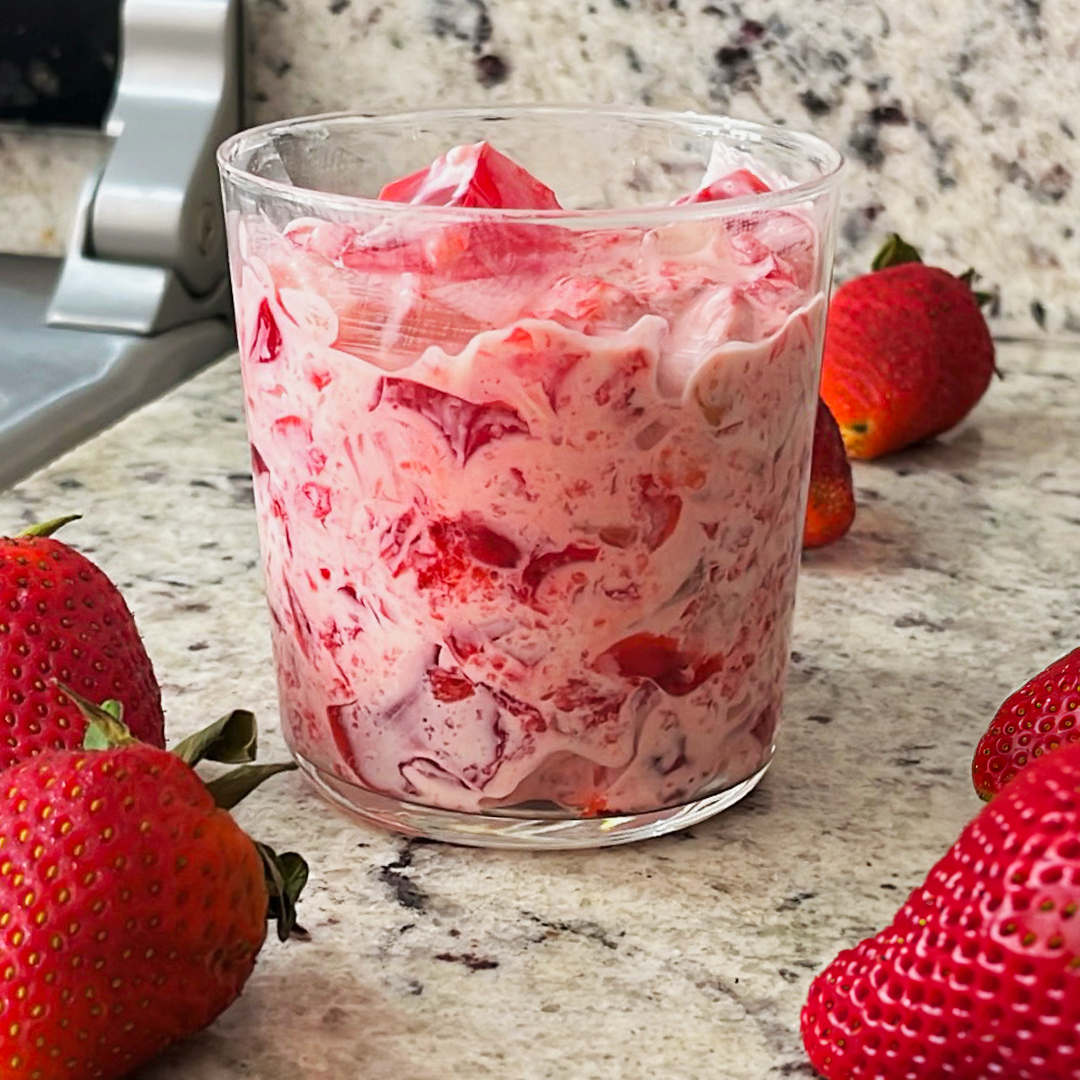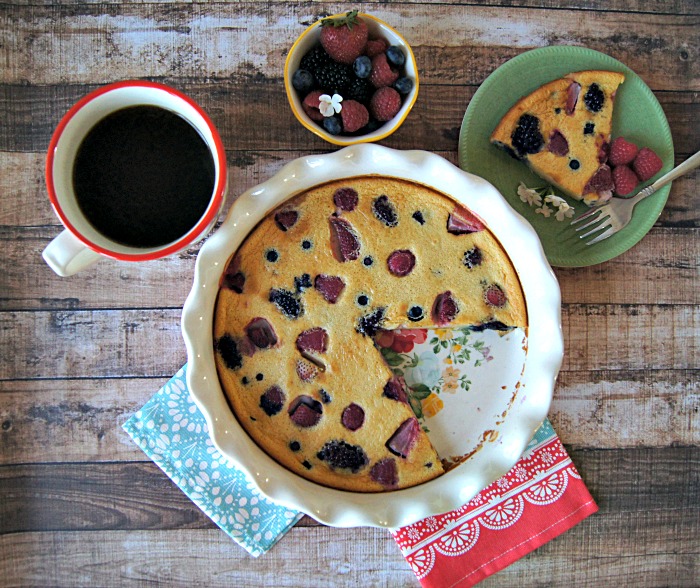Food, Culture + Diabetes
Written by: Beyond Type 1 Editorial Team
7 minute read
November 2, 2020
September Summits are presented by the JDRF-Beyond Type 1 Alliance and made possible with support from One Drop, Roche Diabetes Care and Xeris Pharmaceuticals, active partners of Beyond Type 1 at the time of publication.
During September Summits, Beyond Type 1 sat down with a panel of experts and community members to discuss food, culture and diabetes. This panel provided insight into both the type 1 and type 2 communities, including navigating stereotypes related to food, and allowed for some truly passionate foodies to share their best tips and tricks. Watch the discussion in full!
Speakers included:
- T’ara Smith, who moderated this discussion, is the project manager of Beyond Type 2 and lives with latent autoimmune diabetes in adults (LADA) diabetes, a form of type 1
- Lorena Drago, MS, RDN, CDN, CDE, a registered dietician, nutritionist and certified diabetes care and education specialist, who focuses on diabetes education and cultural competency
- Mila Clarke Buckley, also known as The Hangry Woman, a food blogger and author, who also lives with LADA diabetes
- Eritrea Mussa Khan, who was diagnosed with type 1 diabetes in 2001 and creates content for Diabetics Doing Things
- Robert Lewis, also known as The Happy Diabetic, a chef, who lives with type 2 diabetes
Partial transcript below, edited for content and clarity.
What do you love about food? How has diabetes impacted what you eat, if at all?
Mila: Food is a fun way to be experimental. It’s the way to nourish your body and to show love to people. That’s what I always love about food and cooking. I get to use my creativity in the kitchen to get people to explore new things. Overall, food is very central to my life, it always has been. My family is Jamaican, all of our holidays and all of our gatherings really center around food. Getting diagnosed with diabetes really changed a lot of the ways that I looked at food and thought about food and what I decided to eat. Having a new perspective about what food means to me and how I measure my blood sugar with it and figuring out how I can take care of my overall health, that’s been a really interesting journey.
Eritrea: In all of my cultures, food is so central. It’s when you get together to express love with your family, not just once a year, but all of the time. It’s when your family stops whatever everybody is doing to get together and have a meal. It’s always been a really central part of my life. Food is amazing. I definitely enjoy being so multicultural because I get to eat all kinds of amazing food, from all kinds of amazing places.
Robert: I feel so good when I eat healthy. What I try to do is take ordinary ingredients and turn them into something extraordinary. So less sugar, less fat, less salt, more herbs and spices, fresh vegetables, lean proteins, and I just have fun experimenting with flavor combinations that make food pop… For me, food is just special, it’s personal and it’s comforting. For me, it’s all about delicious food from ordinary ingredients turned into something extraordinary.
Lorena: First of all, I love everything about food, from the most basic and primal aspects of foods, which is nourishment/survival to, I would say, most hedonistic aspect of good food, which is the aroma, the taste and just the pleasure of good eating. Food also connects me to where I’m from—I am from the Caribbean coast of Colombia. Food is about history, it’s about geography and people. It connects us as a culture. In that part of Colombia, the history comes from Spain and Portugal, we have Middle Eastern influence, we also have African influence and indigenous influence. All that is part of who I am, as a person and as a nutritionist.
T’ara: I agree with everything that all of you said. I also have Jamaican in my family and I also have a southern heritage from South Carolina, so I feel pretty blessed to be enriched by these rich cultures that have such just amazing food, but also have a deep appreciation from where food comes. I’ve learned how to garden from both my mother and my grandfather… I love healthy food because I love the way it makes you feel inside. That’s how it’s impacted my life with diabetes as well.
Let’s talk about the things that make our cultural foods so great + how we work them into our diabetes management.
Eritrea: I have type 2 diabetes, but I also have celiac disease, so I’m allergic to gluten. Luckily for me in Mexican culture, we eat a lot of corn tortillas and I get to enjoy all the same foods that I typically would want to eat. If I was to eat Ethiopian food, which is Eritrean food, I wouldn’t necessarily be able to eat injera because it is so starchy and full of flour and I would be sick. But if I didn’t have celiac disease, I would just adjust and take insulin for that as usual. For me, it’s a little different because I have celiac so it’s hard sometimes, but most of the time I find myself still being able to participate in all of my cultural events, and all my cultural food and really enjoying it. There are certain things I have to cut out once in a while. I just replace it with other stuff. If I can’t have pita bread, I’ll have a slice of bell pepper with hummus, you know what I mean? You just replace it to make it work.
Robert: I grew up in a Jewish Home. There was a very diverse culture there of all kinds of interesting foods, it’s just always been so fun. I also live in the Midwest. Here in the Midwest, we have lots of farms, homegrown food, farmer markets and lots of small crop farmers doing some amazing things with heirloom tomatoes. I’m fortunate because in my neck of the woods, we have some of the most amazing vegetables ever, and I just infuse those into my cooking.
Mila: Piggybacking on both of what you were saying Jamaican food is really interesting because it uses a lot of healthy methods of cooking. It uses a lot of bracing, and a lot of spices and grilling. I never really feel like I’m missing out. The portions are big because people love you, and they want to give you as much food as possible but instead of eating an entire three cups of rice with my jerk chicken or with my oxtail I know that I have to scale it back and understand how those portions can affect my blood sugar. Instead of restricting foods, or saying I can’t have this or I can’t eat this, it was how can I make my plate look a little different so that my blood sugar can adapt to what I still love, and I can still enjoy those things.
I also live in Houston, which is one of the most culturally diverse cities in America. I can walk outside of my house and literally have any kind of cuisine that I would ever want anywhere, which is awesome. But it’s also hard because it’s, there are so many different cultures that I want to explore and so many different foods that I want to explore. I have to look at, how is this going to impact my blood sugar? How can I still enjoy these meals but also figure out a way to game the system for myself so I can enjoy it, but also make sure that my blood sugar stays where I want them.
Lorena: I work with a lot of Latinos, and many times I hear, “Oh, but Latino culture has so many starchy foods, and it’s going to be so hard for them because they have diabetes.” I always say, “Wait a minute, 45 to about 65 percent of all the nutrients that we eat come from carbohydrates, it doesn’t matter whether we are Hispanic or not, that’s just what we eat.” It’s always about a shift, about trying to say, “Okay, these are the foods that I eat, these are the foods that are traditional, but then let me just try and play with it to see how much works,” and just trying to shift a little bit instead of just shunning a group of foods because they are or if they’re traditional foods, or you have to stop eating that.
How do you respond to people trying to tell you what you should eat now?
Robert: I try to just say, “Listen, my journey is my journey, and I’m managing things. Let me help you understand why I’m about to eat this and why I can eat this, and how it works in my body.” Some people are receptive to that, some people are not.
Eritrea: I definitely hit them with: “Don’t worry about it, it’s not your business.” I feel 2020 is a little different and the way that society is people aren’t bold to just ask, “What are you eating? What are you doing?” People don’t really do that to me anymore.
Mila: “Don’t worry about it.” I also try to educate people who are willing to listen. There are going to be people who will not care. You’ll try and explain it and tell them and they’ll just say, “Whatever, you have diabetes, you probably shouldn’t do that anyway.” I face a lot of that on Instagram, because I post recipes for things that I cook and things that I enjoy out. If I am invited to a restaurant, I’ll sometimes post a picture of something that I really liked, and someone will be, “Well, that was a croissant, and a croissant has 900 grams of carbs, why would you eat that?” And I have to explain, “Well, I accounted for this in my day.” But also, this is a small snippet of my life that you’re seeing, you’re not seeing every single moment of every single meal that I have. This is one thing and I am allowed to enjoy that one thing, and we’re all allowed to enjoy our food.
Lorena: I seldom say to people that I’m a nutritionist because then people think that I’m the food police. It’s a double-edged sword. One time I posted a meme on social media and I think it was, “Eat whatever you want, and if someone tries to lecture you about your weight, eat them too.”
What are some healthy cooking tips that people can implement today?
Robert: I shop on the outside aisles of the supermarket—the lean meats and proteins, the vegetables and try to avoid too much of the inside food products. At our house, what we like to do quite often is we pick a day of the week where we have some time and we’ll do some bulk cooking. We’ll grill 10 chicken breasts, slice them up, put them in small freezer bags, and put them in the freezer. If we’re coming home at 5:30 and we’re both racing in the house, we take out the chicken breasts that are already cooked, throw vegetables in the frying pan, sauté a little olive oil, some fresh tomatoes, throw the chicken in, season it up, and you’ve got a quick, healthy meal. Those things help me prepare very quickly.
Mila: Season your food! If you use herbs and spices and different types of healthy fats, you can create really delicious meals really simply without adding a lot of calories or carbohydrates or sugar. You can really vary things just with the different spices that you use. A friend called me the other day and she was laughing and said, “I opened your pantry and the whole wall of your pantry is spices.” I was like, “Yeah, because I cook a lot, why have boring food?” You can change it up just by changing up the herbs and spices that you use in your food.
Eritrea: I’m not a chef but I find that with Mexican food, we use the same ingredients for every meal. We’re just preparing them and spicing them differently. Every meal is tomato, onions, serrano pepper, tortillas… Mila’s right. You can transform dishes with the right spice.
To watch the entire discussion, click here.

Author
Beyond Type 1 Editorial Team
This piece was authored collaboratively by the Beyond Type 1 Editorial Team. Members of that team include Editorial Manager Todd Boudreaux, Project Manager Mariana Gómez, Director of Brand Communications Dana Howe, Project Manager T'ara Smith, Director of Program Jordan Dakin and Editorial Associate Makaila Heifner.
Related Resources

Ropa vieja is too good to skip—just serve it smart! Traditionally paired with rice and...
Read more

Tacos al pastor are the perfect grab-and-go meal—packed with bold flavor and easy to customize....
Read more

Craving a sweet treat without the added sugar? Today we’re sharing a quick, budget-friendly recipe...
Read more

